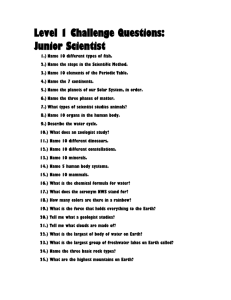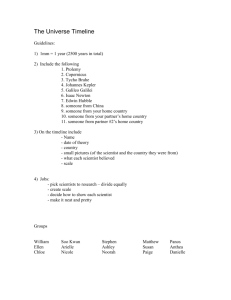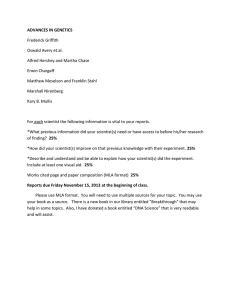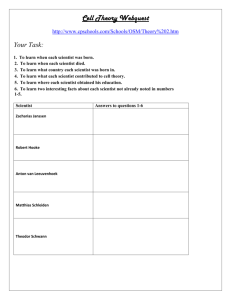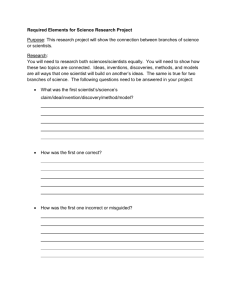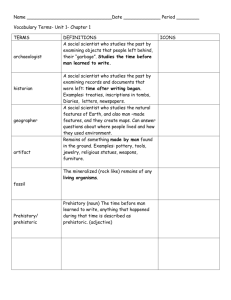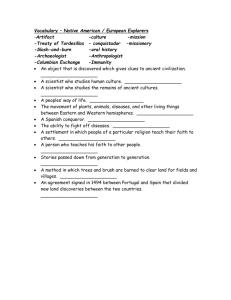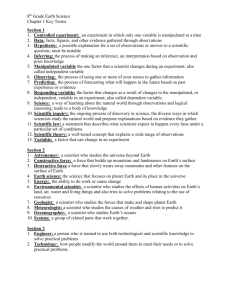FOCI Sample Proposal
advertisement
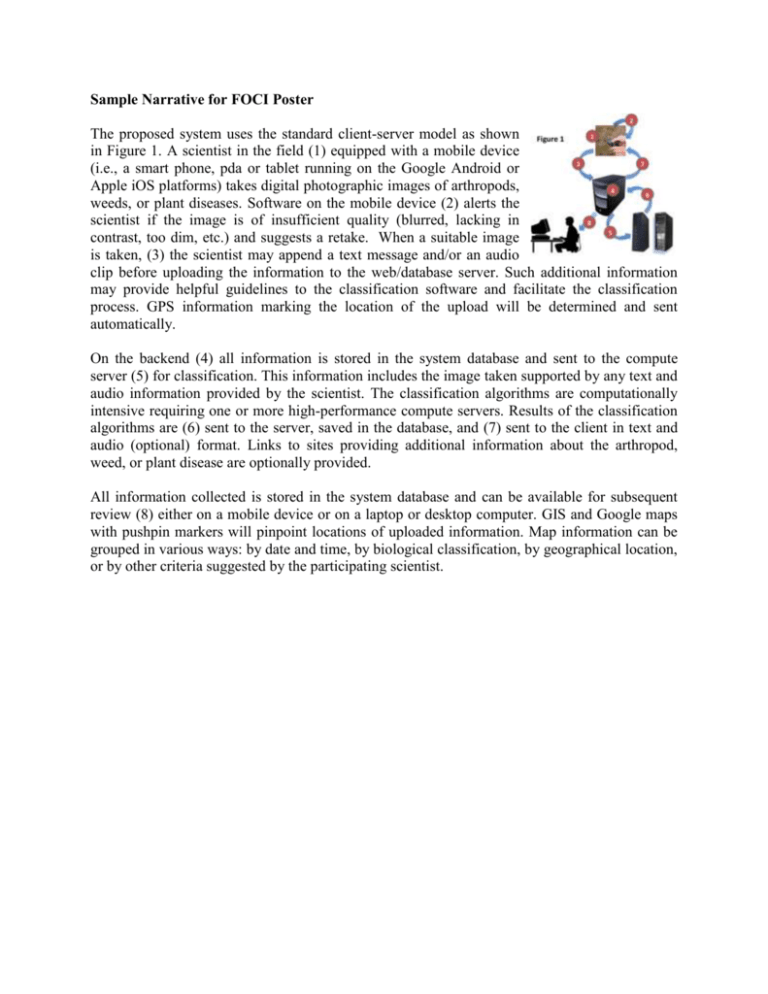
Sample Narrative for FOCI Poster The proposed system uses the standard client-server model as shown in Figure 1. A scientist in the field (1) equipped with a mobile device (i.e., a smart phone, pda or tablet running on the Google Android or Apple iOS platforms) takes digital photographic images of arthropods, weeds, or plant diseases. Software on the mobile device (2) alerts the scientist if the image is of insufficient quality (blurred, lacking in contrast, too dim, etc.) and suggests a retake. When a suitable image is taken, (3) the scientist may append a text message and/or an audio clip before uploading the information to the web/database server. Such additional information may provide helpful guidelines to the classification software and facilitate the classification process. GPS information marking the location of the upload will be determined and sent automatically. On the backend (4) all information is stored in the system database and sent to the compute server (5) for classification. This information includes the image taken supported by any text and audio information provided by the scientist. The classification algorithms are computationally intensive requiring one or more high-performance compute servers. Results of the classification algorithms are (6) sent to the server, saved in the database, and (7) sent to the client in text and audio (optional) format. Links to sites providing additional information about the arthropod, weed, or plant disease are optionally provided. All information collected is stored in the system database and can be available for subsequent review (8) either on a mobile device or on a laptop or desktop computer. GIS and Google maps with pushpin markers will pinpoint locations of uploaded information. Map information can be grouped in various ways: by date and time, by biological classification, by geographical location, or by other criteria suggested by the participating scientist.
